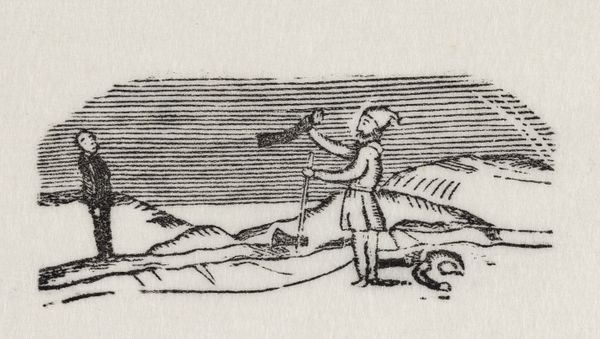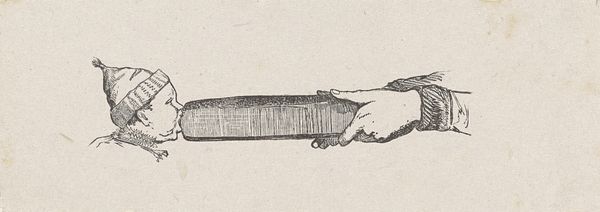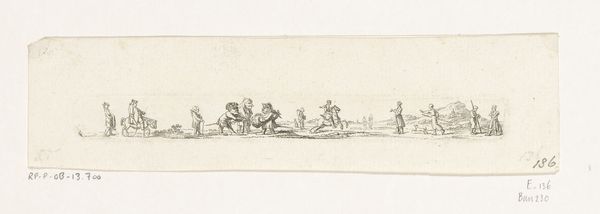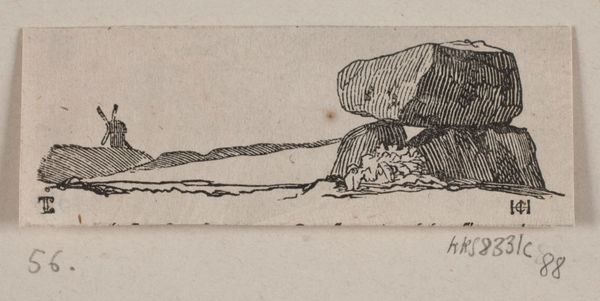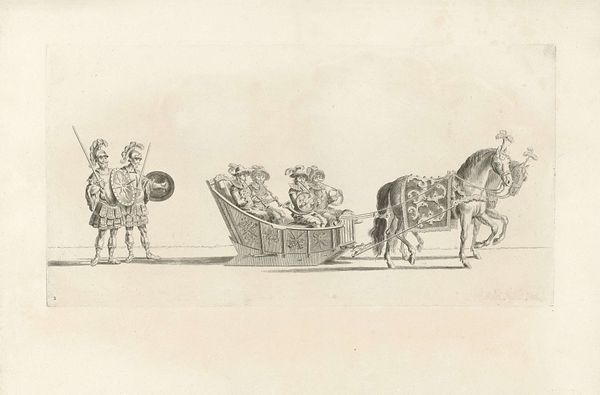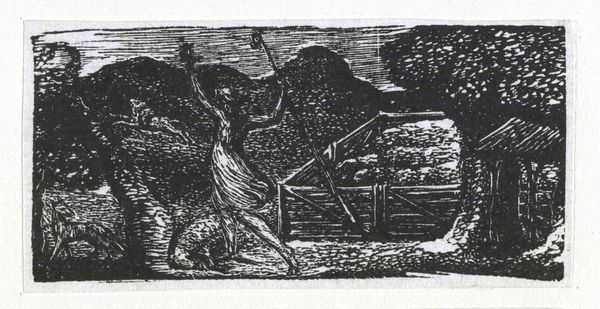
Fortællingen om Kênake den ubeskuelige: Den dræbte fader føres hjem i umiaq af sin kone og sønnen Kênake 1859 - 1860
0:00
0:00
print, woodcut
#
narrative-art
# print
#
landscape
#
figuration
#
woodcut
#
line
#
indigenous-americas
Dimensions: 54 mm (height) x 123 mm (width) (billedmål)
Editor: This is *Fortællingen om Kênake den ubeskuelige: Den dræbte fader føres hjem i umiaq af sin kone og sønnen Kênake* by Aron from Kangeq, created around 1859-1860. It's a woodcut, a print in stark black and white showing two figures in a long boat. It's really striking. What’s your interpretation of the materials and technique used? Curator: This work's power lies in its immediate connection to its material origins. Consider the woodcut medium itself, a direct and relatively accessible mode of production for sharing this narrative. Think about who had access to create and disseminate images in Greenland at this time. Editor: So the choice of woodcut implies a certain democratisation of image making? Curator: Precisely. It speaks to a specific social context. The availability and affordability of wood as a material, versus, say, imported paper for drawings, suggests an intentional decision. This is also an important point related to labour. This imagery shows a scene depicting transportation with umiaq boats which themselves have specific fabrication process and associated work in Inuit society. The use of the line itself - think of how the repetitive lines depicting the water are mimicking the work of rowing! Editor: I never thought about how the medium connected so directly to both the story and the culture! It's more than just a picture; it's tied to production and labour. Curator: Exactly. By considering the materiality and the means of production, we get a far richer understanding of the artwork's significance and the social landscape from which it emerged. Editor: Thanks! I see it now, a cultural artefact rooted in process and people. Curator: And that's how we connect the image back to the real-world experience of its creation.
Comments
No comments
Be the first to comment and join the conversation on the ultimate creative platform.
